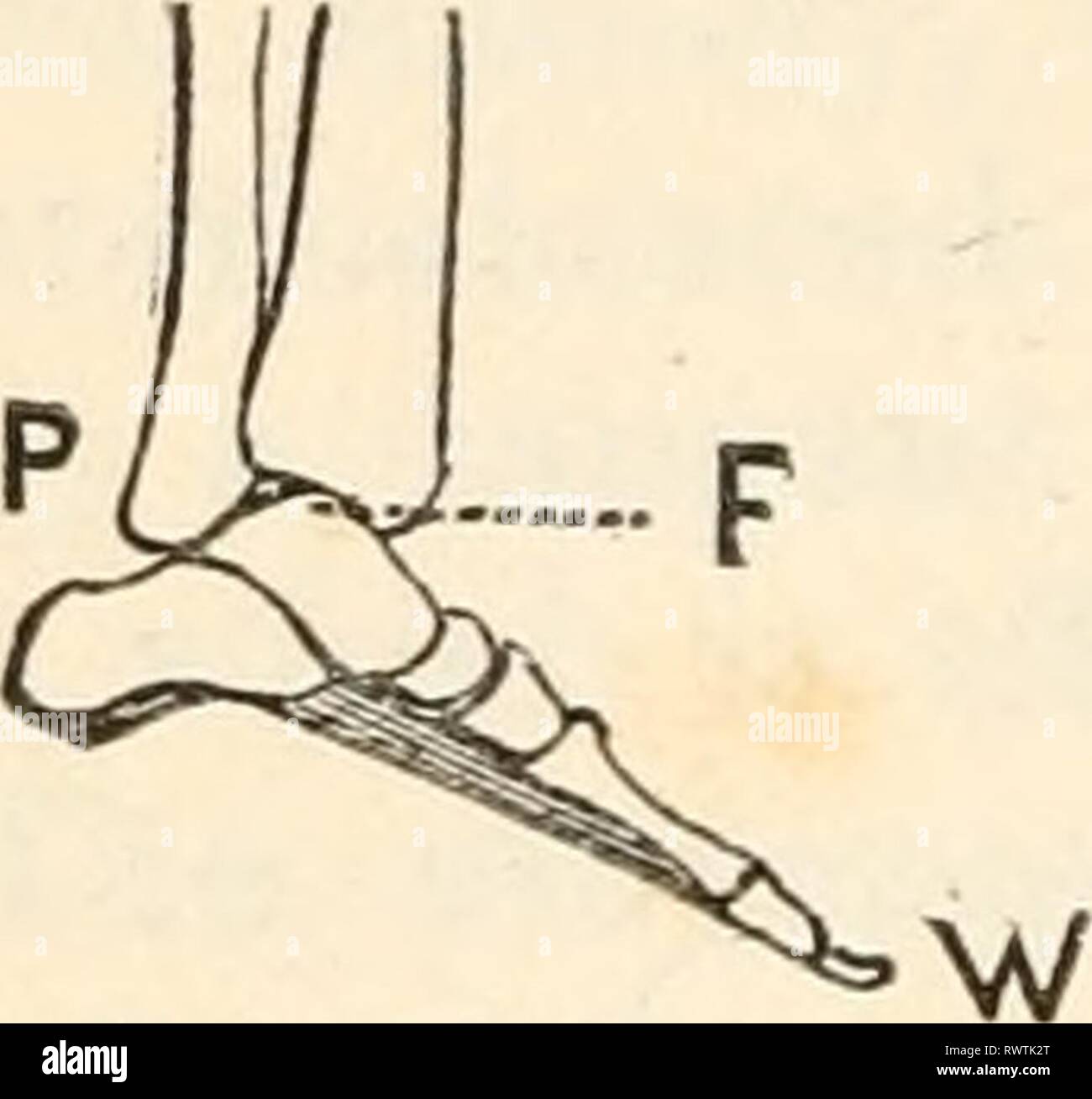The elements of physiological physics The elements of physiological physics: an outline of the elementary facts, principles, and methods of physics; and their applications in physiology elementsofphysio00mgre Year: 1884 5oS PHYSIOLOGICAL PHYSICS. [Chap. XLIII. Fig. 214.—The Foot as a Lever of the First Order. power (triceps), and weight (that of the fore-arm). Here, however, the power arm (page 495) is short, and the resistance arm is long, so that the power is at a disadvantage. At the same time a small movement of the triceps effects a considerable movement of the hand, and thus rapidity

Image details
Contributor:
Bookworm / Alamy Stock PhotoImage ID:
RWTK2TFile size:
5.7 MB (90.7 KB Compressed download)Releases:
Model - no | Property - noDo I need a release?Dimensions:
1461 x 1369 px | 24.7 x 23.2 cm | 9.7 x 9.1 inches | 150dpiMore information:
This image is a public domain image, which means either that copyright has expired in the image or the copyright holder has waived their copyright. Alamy charges you a fee for access to the high resolution copy of the image.
This image could have imperfections as it’s either historical or reportage.
The elements of physiological physics The elements of physiological physics: an outline of the elementary facts, principles, and methods of physics; and their applications in physiology elementsofphysio00mgre Year: 1884 5oS PHYSIOLOGICAL PHYSICS. [Chap. XLIII. Fig. 214.—The Foot as a Lever of the First Order. power (triceps), and weight (that of the fore-arm). Here, however, the power arm (page 495) is short, and the resistance arm is long, so that the power is at a disadvantage. At the same time a small movement of the triceps effects a considerable movement of the hand, and thus rapidity of move- ment is obtained. Again, a lever of the first order is seen when the raised foot is extended on the ankle joint. The joint is fulcrum F, while by the tendo Achilles power p is ap- plied, and the weight w of the fore part of the foot offers the resistance (Fig. 214). An example of a lever of the second order is found in the support of the body on the ball of the toes, where the fulcrum is at the ball of the toes. The power is applied by the muscles of the calf to the heel, and the weight is that of the body communicated through the tibia, the weight being between the power and fulcrum (Fig. 215). This, we have seen, is the lever of power, because the power arm is longer than the weight arm. It is not so com- mon in the body as the lever of the third order. The latter is the lever of quickness at the cost of power, for the power is between fulcrum and weight, and has a shorter arm than the weight. As a compensation, however, a small movement of it will effect a considerable move- ment of the weight. Rapidity of movement is thus the object attained by the third kind of lever. Thus, a good example is afforded in flexion of the fore-arm on the upper arm, with a weight in the hand. The power is at the attachment of the biceps between the elbow-joint and the centre of gravity of the fore-arm,